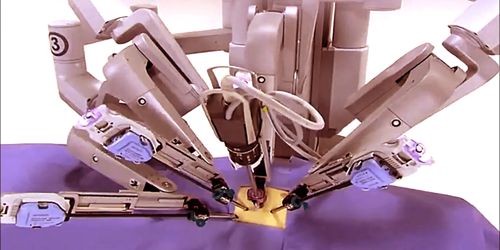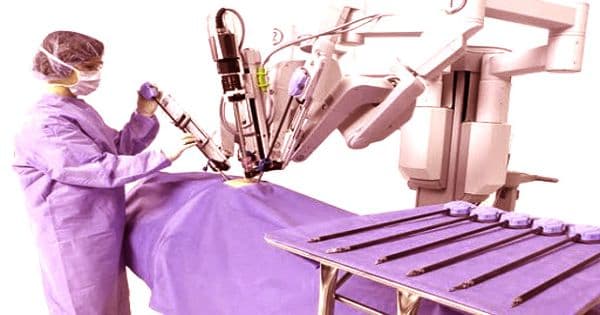Rubbery semiconductor makes Medical Robotic Hand
The new rubbery semiconductor, which has high carrier mobility, features soft, stretchy and rubbery electronics and integrated systems that mimic the mechanical softness of biological tissues. A medical robotic hand could allow doctors to more accurately diagnose and treat people from halfway around the world, but currently available technologies aren’t good enough to match the in-person experience. When patients hear the term “robotic surgery,” they often have questions for their surgeon. Surgeons completely control the robot, which cannot move independently or autonomously.
The semiconductor could be used for a variety of applications, with smart skin and the medical robotic hand just two possibilities. Researchers report in Science Advances that they have designed and produced a smart electronic skin and a medical robotic hand capable of assessing vital diagnostic data by using a newly invented rubbery semiconductor with high carrier mobility. A robot is a tool that allows for a greater range of motion and better visibility, while still working through the small incision traditionally used in laparoscopy.
Cunjiang Yu, Bill D. Cook Associate Professor of Mechanical Engineering at the University of Houston and corresponding author for the work, said the rubbery semiconductor material also can be easily scaled for manufacturing, based upon assembly at the interface of air and water.
“One of the benefits of the robot is that it allows the extension of the surgeon’s hands within a patient’s abdominal or thoracic cavity, or wherever the surgeon is working,” says Harrison Pollinger, D.O., a multi-organ transplant surgeon at Piedmont Atlanta.
The smart skin and medical robotic hand are just two potential applications, created by the researchers to illustrate the discovery’s utility. “It has no way of anticipating the steps of the surgery and is not hooked up to a computer program. The robot actually mimics what the surgeon is doing.”
In addition to Yu, authors on the paper include Ying-Shi Guan, Anish Thukral, Kyoseung Sim, Xu Wang, Yongcao Zhang, Faheem Ershad, Zhoulyu Rao, Fengjiao Pan, and Peng Wang, all of whom are affiliated with UH. Co-authors Jianliang Xiao and Shun Zhang are affiliated with the University of Colorado.

Fig: Robot Surgeons are the Future of Medicine
Traditional semiconductors are brittle, and using them in otherwise stretchable electronics has required special mechanical accommodations. Previous stretchable semiconductors have had drawbacks of their own, including low carrier mobility — the speed at which charge carriers can move through a material — and complicated fabrication requirements.
Yu and collaborators last year reported that adding minute amounts of metallic carbon nanotubes to the rubbery semiconductor of P3HT — polydimethylsiloxane composite — improves carrier mobility, which governs the performances of semiconductor transistors.
Yu said the new scalable manufacturing method for these high performance stretchable semiconducting nanofilms and the development of fully rubbery transistors represents a significant step forward.
The production is simple, he said. A commercially available semiconductor material is dissolved in a solution and dropped on water, where it spreads; the chemical solvent evaporates from the solution, resulting in improved semiconductor properties. Simple to produce, the commercially available semiconductor material is first dissolved in a solution and dropped in water.
The new scalable manufacturing method creates high-quality composite films for consistent semiconductors that are entirely rubbery. It is a new way to create high-quality composite films, he said, allowing for consistent production of fully rubbery semiconductors.
Electrical performance is retained even when the semiconductor is stretched by 50%, the researchers reported. The chemical solvent evaporates from the solution and creates improved semiconductor properties. Yu said the ability to stretch the rubbery electronics by 50% without degrading the performance is a notable advance. Human skin, he said, can be stretched only about 30% without tearing. Thanks to a stretchy kind of semiconductor, researchers were able to create a robotic hand that could enable doctors to remotely diagnose and treat people all over the world.















